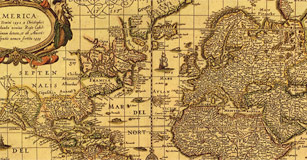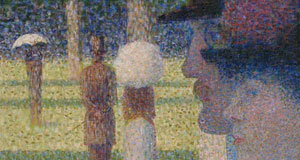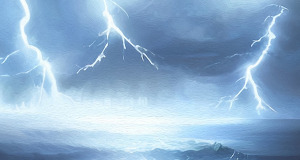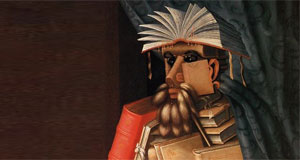Tourism Trade Show
Students develop materials to promote a specific region they are studying and make their pitch for a visit to this location at a tourism trade show.
Apps: Wixie®
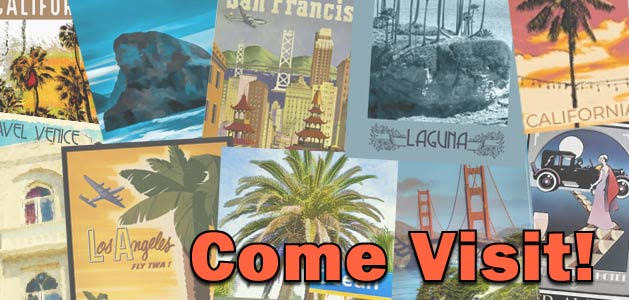
Task
Tourism plays an important role in the economy and is a major source of revenue for cities, states, and countries around the world. In this project, students develop materials to promote a specific region they are studying and make their pitch for a visit to this location at a tourism trade show.
Engage
In this project, your students develop knowledge about a state, region, or country as they develop a tourism campaign to attract visitors to this destination.
Before they begin working on their promotional materials, be sure to share that:
- Travel is a primary driver of economic growth and job creation
- 1 in 9 private sector jobs depend on travel
- Advertising and promotion have a direct impact on tourism.
When people visit an area, their tourism spending creates jobs, fuels the local economy and generates revenue to support important services like police and fire departments.The more they can increase visitors to a location, the more they support the economic and social health of location.
Before you begin the process, group students into small teams. A collaborative approach not only helps them identify and develop content more quickly, but reflects how tourism promotion is done in the real world.
Give students choice by grouping them based on interest in a particular area. If you allow students to choose teams or locations, let them know they still have to meet your team size requirements and may not get their first choice.
Depending on your goals for student work and the needs of the learners in your classroom, you may want to group them yourself so that each team has a strong leader, researcher, graphic artist, and technical expertise.
Next, give teams time to research the area they are promoting. You may want to guide their research by having them identify:
- geographic features
- large or important cities
- weather and climate
- unique cultural sites or customs
- locations of historical interest
- common leisure activities
This will provide students with a range of ideas and information they can use to attract potential visitors.
Teams also need to identify the audience for their work. This lesson culminates in a tourism trade show for families and local community members, but you can also have students develop online resources for a wider audience. Even if they choose families with kids the same age as they are, they need to think about the audience, so they can reflect, and determine which information and type of media will best persuade this group.
Create
Instead of telling students what types of information should be shared at a trade show, involve them in the process by asking them what they think might be included.
Explore specific examples of how regions are already being promoted. And, ask your students’ parents if any of them have connections to a local tourism bureau who might be able to come present in your classroom.
Share examples of tourism promotions with your students. Bring in travel brochures they can touch or visit online sites like Hemisphere magazine’s Three Perfect Days section which features sample itineraries.
It’s also easy to find examples of great tourism videos, just be sure to watch them ahead of time, so you know they are appropriate for the classroom.
Discuss how these materials inspire a traveler. What information do they include? What persuasive techniques do they use?
Create a list of product ideas, such as brochures, itineraries, slide shows, and social media posts, so that students have a range of things their team members can create.
Be sure students consider how the materials they choose to design can be used during a tourism trade show. What sort of visual display will they need? Does it have to be a poster or can it be a projected video? What will visitors be able to take with them to learn more about the area and entice them to want to visit?
Work as a class to define a list of “must-haves” and “could haves” for both content information and delivery mediums. Then, provide ample time for student teams to brainstorm ideas for their tourism promotion and design materials that meet their goals.
Share
Host an evening event, in the form of a tourism trade show, where families and community members can learn more about places to spend vacation time. Have each team of students representing a state (or country) create a trade show booth where they share their tourism pitch.
Pitches should include visual displays to attract visitors as well as refined oral arguments to encourage them to learn more and visit! Displays could also include promotional materials visitors can take with them to remind them of details about the destination. These could include stickers, postcards, sample itineraries, and/or full-fledged tourism brochures.
Before hosting the event for family and community, invite classes from other grades and subjects to visit the trade show to give students a chance to practice their pitch and see what types of questions might get asked during the event. Give them time to refine and adjust before the main event.
If students are creating these materials digitally, they can also refer visitors to online web sites, videos, and other materials using URLs and QR codes. You could even host a virtual conference by sharing these links and resources online through a digital newsletter, classroom web site or social media campaign.
Assessment
The tourism trade show provides a fun summative performance assessment of both student knowledge about their location as well as their ability to use that information to persuade. Use student and team research notes to identify misconceptions and ensure they have adequate information before writing (formative).
Create and share a rubric or checklist to clarify information, argument, and design expectations. While it is more time intensive, working with your class to create a rubric or checklist transfers responsibility for learning and gives students ownership of the assessment criteria.
Having continuous discussions with each group during the research, media format choices, and design work can provide additional insight into whether or not you need to revisit research techniques and argument writing skills with individual groups or the class as a whole.
Resources
50 States (includes ads, but also many helpful links)
How to Perfect Your Persuasive/Argumentative Essay
11 Creative Ideas to Market Your Destination
Standards
C3 Framework for Social Studies State Standards
D2.Geography.5.3-5
Explain how the cultural and environmental characteristics of places change over time.
D2.Geography.6.3-5
Describe how environmental and cultural characteristics influence population distribution in specific places or regions.
D2.Geography.8.3-5
Explain how human settlements and movements relate to the locations and use of various natural resources.
D2.Geography.5.6-8
Analyze the combinations of cultural and environmental characteristics that make places both similar to and different from other places.
D2.Geography.6.6-8
Explain how the physical and human characteristics of places and regions are connected to human identities and cultures.
D2.Geography.8.6-8
Analyze how relationships between humans and environments extend or contract spatial patterns of settlement and movement.
Common Core State Standards for English Language Arts:
College and Career Ready Anchor Standard.W.4
Produce clear and coherent writing in which the development, organization, and style are appropriate to task, purpose, and audience.
CCSS.ELA-LITERACY.RH.6-8.2
Determine the central ideas or information of a primary or secondary source; provide an accurate summary of the source distinct from prior knowledge or opinions.
CCSS.ELA-LITERACY.RH.6-8.6
Identify aspects of a text that reveal an author's point of view or purpose (e.g., loaded language, inclusion or avoidance of particular facts).
ISTE Standards for Students:
3. Knowledge Constructor
Students critically curate a variety of resources using digital tools to construct knowledge, produce creative artifacts and make meaningful learning experiences for themselves and others. Students:
a. plan and employ effective research strategies to locate information and other resources for their intellectual or creative pursuits.
b. evaluate the accuracy, perspective, credibility and relevance of information, media, data or other resources.
c. curate information from digital resources using a variety of tools and methods to create collections of artifacts that demonstrate meaningful connections or conclusions.
6. Creative Communicator
Students communicate clearly and express themselves creatively for a variety of purposes using the platforms, tools, styles, formats and digital media appropriate to their goals. Students:
a. choose the appropriate platforms and tools for meeting the desired objectives of their creation or communication.
b. create original works or responsibly repurpose or remix digital resources into new creations.
d. publish or present content that customizes the message and medium for their intended audiences.




